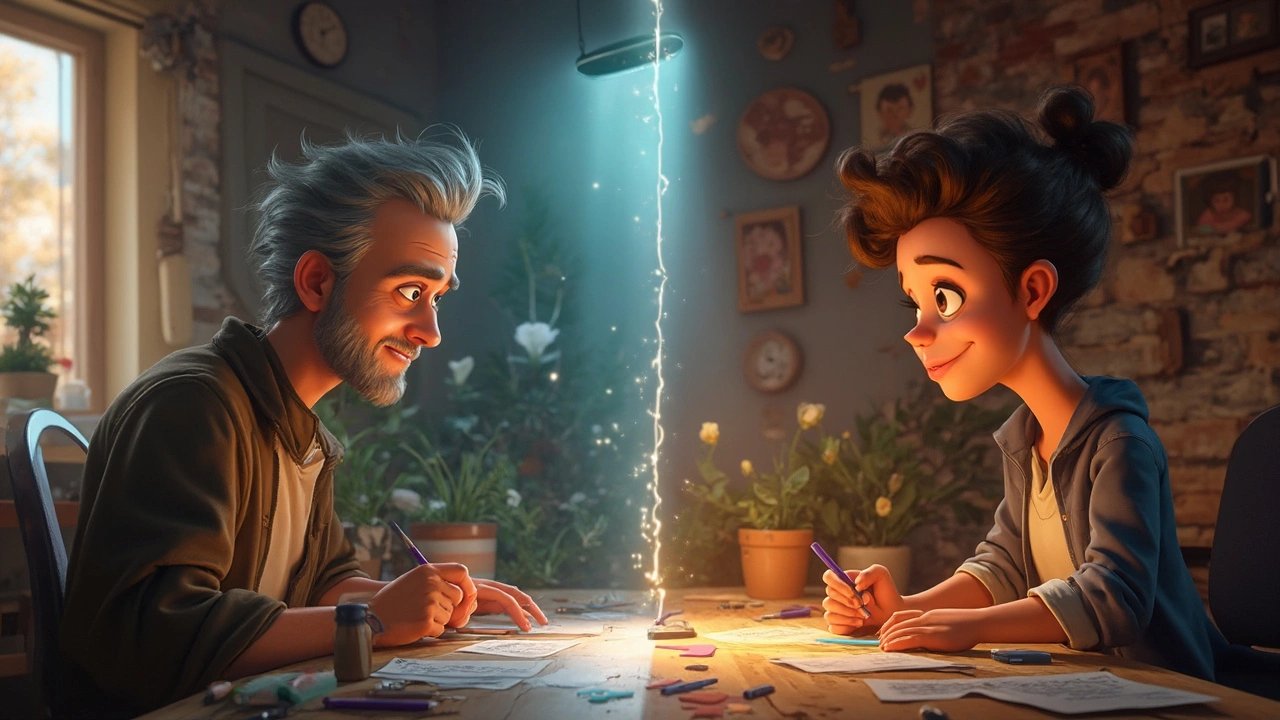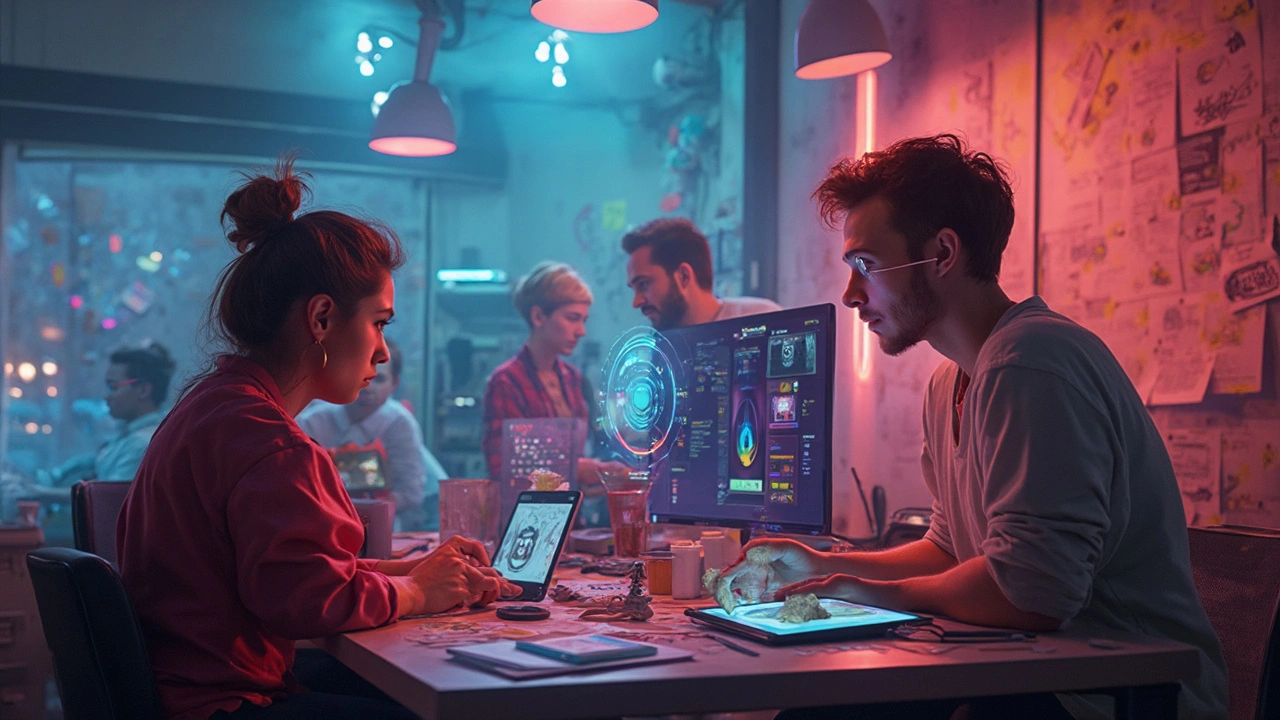If you thought animation meant rows of artists hunched over drawing boards for months, AI is here to blow that idea out of the water. Picture this: an animator uploads a simple sketch, picks a style, types in a script—and within minutes, full scenes appear, characters move, even facial expressions sync up with the dialogue. That’s not some sci-fi teaser, it’s actually happening. Where Disney’s classic Snow White took hundreds of artists three years to complete, a lone creator today can pull off a short film in days. AI isn’t just a tool in the animator’s box. It’s rewriting what’s possible, opening the gates to creators who never had access to big budgets or teams.
The AI Toolkit: What’s Changing for Animators
The first thing most folks realize about AI and animation is speed. Using machine learning, AI tools can generate entire frames, fill in in-betweens, or spit out color suggestions faster than you can brew a pot of coffee. For traditional 2D projects, AI-powered software now auto-completes backgrounds, fixes animation glitches, and even animates characters based on rough sketches. It’s like having a supercharged assistant that never gets tired. Did you know Netflix’s ‘The Liberator’ combined live-action footage with AI-powered rotoscoping? The result: realistic movement and expressive faces, finished in a fraction of the usual time.
But speed isn’t the only win. You’ve probably seen how AI-driven lip-sync makes dialogue look dead-on, or how AI morphs one art style into another at the click of a button. Platforms like Adobe After Effects have sold plugins powered by AI—these can smooth animation, handle transitions, clean up noisy backgrounds, or even track motion in real time. It’s not just about making things quicker but about unlocking new creative directions. Now, animators are playing more with their ideas and less with repetitive technical fixes.
Look at the table below for a snapshot of how animation time and cost have dropped over the years, largely thanks to AI:
| Year | Average Time for Short Film | Cost Per Minute (USD) |
|---|---|---|
| 1990 | 3 months | 10,000 |
| 2010 | 1 month | 5,000 |
| 2024 | 3-7 days | 800 |
Production companies are loving it. What used to require big studios and endless deadlines is now within reach for indie creators, YouTubers, even brands needing a last-minute ad.
Creativity Unleashed: New Possibilities with AI Animation
The misconception that AI will kill creativity keeps coming up, but in real life, it’s actually blowing the doors off what animators can do. The coolest thing? AI learns from thousands of previous works—styles, movements, camera angles—and then it can remix those into something new. This means even solo artists get access to decades of collective experience with zero training required. Take AI-powered storyboarding: tools like Storyboarder can generate a rough animated sequence from a written script, so creators can test and tweak ideas before committing serious hours to production.
Have you seen deepfake animations? Studios now use AI to swap actors’ faces or de-age characters in post-production. While this tech can get a bad rap, it’s transforming what’s possible for bringing classic characters back to life or letting an old voice actor perform in a new film. Even bigger are generative AI programs like Runway or Pika Labs—that let users type a prompt ("robot chefs cooking spaghetti on Mars") and actually generate moving clips in seconds. This used to be something possible only in big-budget movies; now anyone with a laptop and a wild idea can compete.
Of course, not every creative twist is a hit right out of the gate. Animators are discovering that AI lets them play more—try out wilder color schemes, push movement beyond what’s humanly possible, and turn out-of-the-box ideas into storyboards with just a few clicks. It kind of feels like a band suddenly getting dozens of new instruments; not every song is gold, but the options are way richer.
TechCrunch recently quoted Rachel Knight, head of innovation at an Emmy-winning animation studio, saying:
“We use AI for the grunt work—cleaning frames, managing timing—so our artists can focus on story and emotion. It’s like having a paintbrush that learns with you.”
Don’t get carried away, though. AI still can’t (yet) invent Pixar-like charm or nail subtle human emotion every time. Think of it more like a superpowerful tool—not a replacement.

Challenges & Questions: Is AI Animation All Sunshine?
With every jump forward, there’s always a catch. Some pros worry if AI-powered shortcuts will replace jobs, but what’s happening now says otherwise. Animators are finding themselves getting more projects done, spending less time on dull fixes, and more on design and narrative. Still, studios debate who owns the rights to imagery created by AI, especially since some AI tools learn by scraping tons of existing work from the internet—sometimes without asking the original artists. There’s a push for stricter rules and ways to credit (and pay) human creators whose art gets fed into the data machine. Artists unions have already flagged this as a big issue to settle.
Then there’s the question of "style collapse"—if everyone uses the same AI tools and feeds them the same references, will all animations start looking the same? So far, this hasn’t happened. Developers keep tweaking algorithms to encourage weirder, more original outputs. Still, smart animators mix AI tricks with their signature style—putting plenty of "handmade" feeling into their films. And about the elephant in the room: deepfake tech can be used to create fake celebrity videos or even fake news, so some studios are careful where and how they use these tools, especially when it comes to re-creating actors who’ve passed away.
Want to know a handy tip? If you’re a creator, always run AI-generated art through plagiarism checks before sharing online—just to be safe. There’s also a growing movement of "watermarking" to help audiences (and lawyers) tell what’s AI-made and what’s handcrafted.
Here’s a quick rundown of what pros recommend for staying ahead:
- Keep up with AI updates—new tools drop all the time and the good ones get scooped up fast.
- Mix AI with traditional technique—blend for that human touch.
- Double-check copyrights and always give credit when using reference materials.
- Push for ethical use—know how your tools learn and what’s fair game.
The industry isn’t standing still. Expect more debates about what’s fair, what’s art, and what’s just quick tricks any day now.
Where Animation Goes Next: The Future with AI
Here’s where things get even wilder. As AI animation gets cheaper, faster, and smarter, expect a creative explosion. Already, student filmmakers are winning awards with works made entirely on laptops using off-the-shelf AI tools. Brands create animated mascots for marketing campaigns with just a few mouse clicks. Some game studios use AI to generate cutscenes and background crowds, shrinking production time while keeping big visuals. If this pace keeps up, in five years we might see an animated blockbuster made by a handful of folks in their garage.
The big streaming companies are jumping in: Disney, Netflix, and Amazon are all investing huge sums into AI-powered animation pipelines. They’re not replacing their old magic but turbocharging it; for example, Disney’s AI lab recently developed technology to instantly colorize black-and-white cartoons, opening the vault for a new generation of fans. In Japan, some studios already use AI voice actors that can deliver different emotions—happy, sad, excited—based on the text of dialogue scripts. It saves casting costs and lets writers tweak performances up to the last minute before airing an episode.
If you’re an artist or a fan, now’s the best time to dive in and experiment. So many AI tools offer free trials or simple versions for beginners—check out ToonBoom Harmony’s new AI-assisted layering, or give Blender’s AI animation plugins a spin. The trick? Don’t just use AI for shortcuts—let it spark ideas, speed your process, and help you try wilder things than you thought possible.
Animation isn’t about drawing perfectly or owning Hollywood budgets anymore. It’s about stories, style, and sharing your voice—and with AI in your back pocket, the world you create is only limited by your imagination (and maybe your laptop’s RAM).

